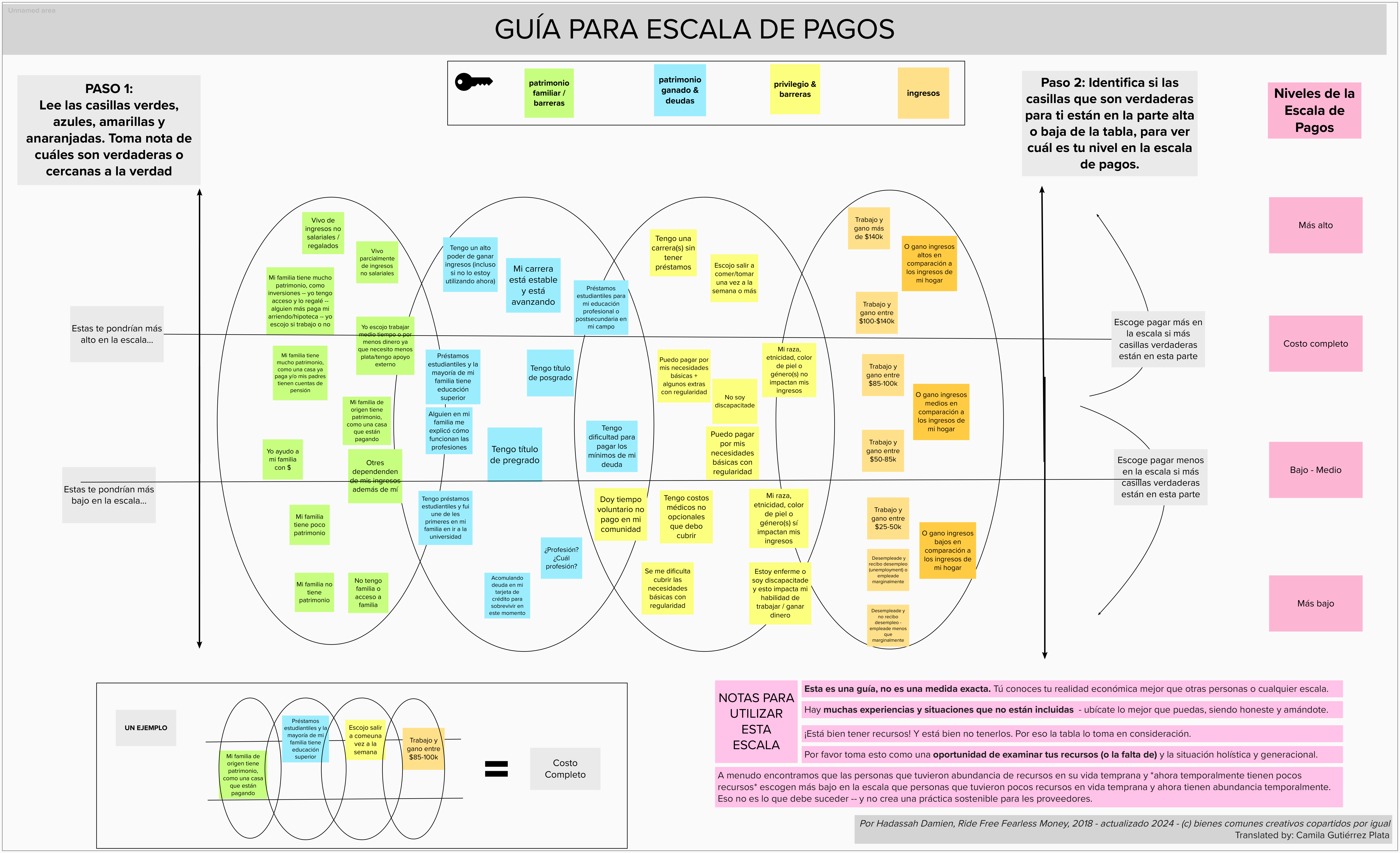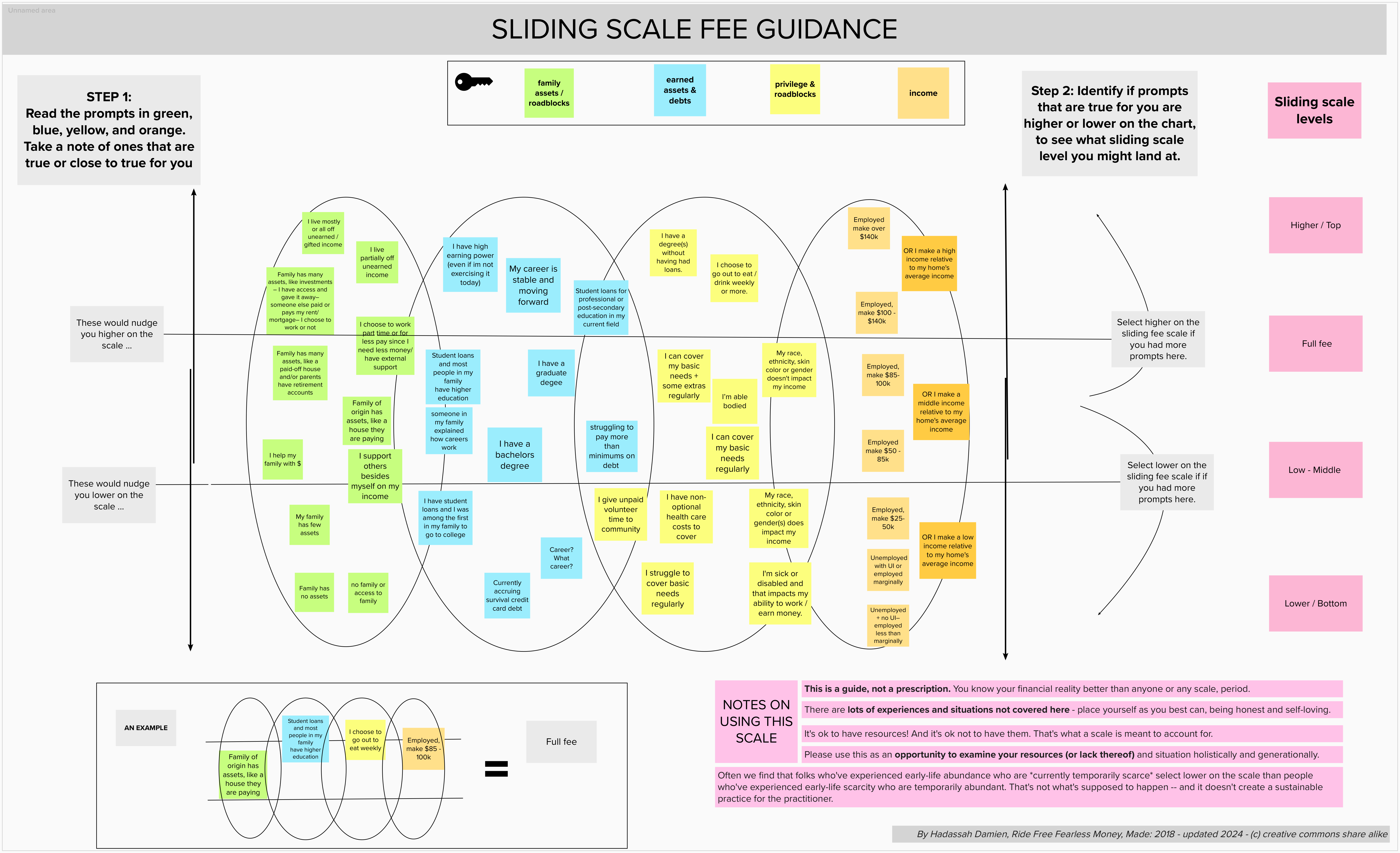I’ve had sliding scale guidance available for years – freely shared, which you are welcome to use, copy, or distribute – because sliding scale financial inclusion considerations are important to me.
And now, the worksheet is available in Spanish, thanks to work donated by Camila Gutiérrez Plata <3 [contact Camila here if you want translation support!] and coordinated by Jo Elliott Gutierrez at Queer Body Collective. Please check out these folks as they did the work to imagine, coordinate, and translate to make this a reality. Plus it kicked my butt to update the worksheet 🙂
The worksheet is for people engaging with selecting where they land on a sliding scale, rather than setting a scale as someone offering something, though I think it offers insights for people setting sliding scales as well.
Sliding scale is an experiment in financial accommodations
I have a long connection to sliding scale. Personally: when I was broke, it made experiences more accessible [sometimes, I get into sticky implementation problems in the article]. Now that I’m middle class, I get to pay it forward to help out others.
As an artist, it was one way to ensure people could access my shows [physical accessibility is another pillar of this, of course]. And as someone with a small business, I still offer sliding scale — though not as much as I used to — to make sure that there are parts of my work that are always more accessible.
And as a money teacher, talking about sliding scale gets into the weeds of both how we connect others to our work and how we draw boundaries that make it possible for us to sustain the work.
I stopped sliding scale on my coaching a few years ago, because I was overextended and feeling overall undercompensated for that work, which was making it unsustainable for me both financially and time-wise. Now, I offer workshops and group coaching that are sliding scale and donate one coaching spot a month to under-resourced BIPOC community organizers or under-resourced non-BIPOC people who directly support BIPOC liberation with their work.
Everyone who engages with sliding scale will have their own version of how they do and don’t slide their scales. It’s a balance on both sides of the equation and I love that it asks us to engage with important, major questions about money, need, access, support, and sustainability. Check out the LONG article here on sliding scale.

